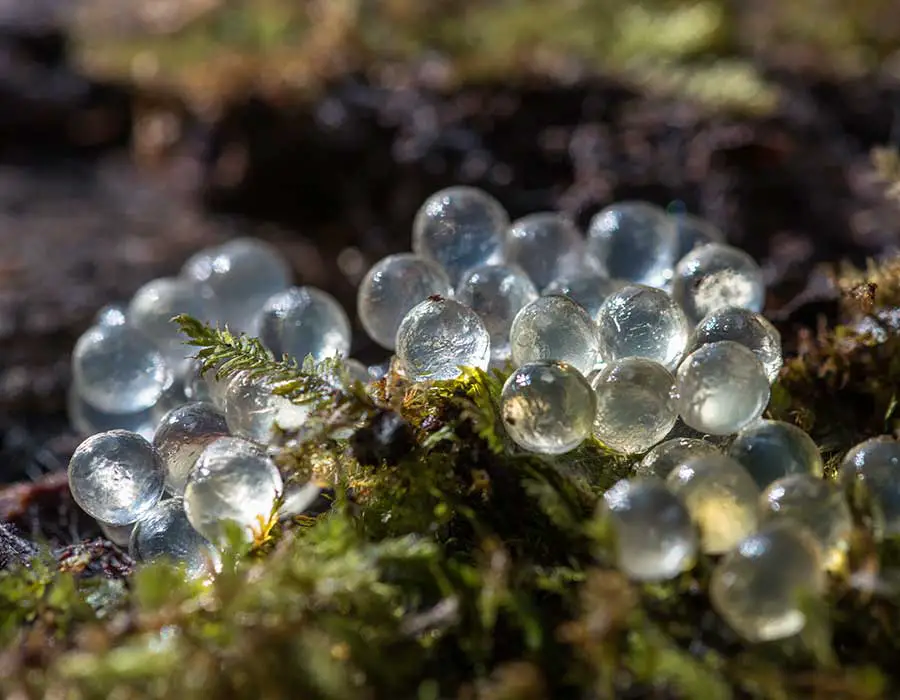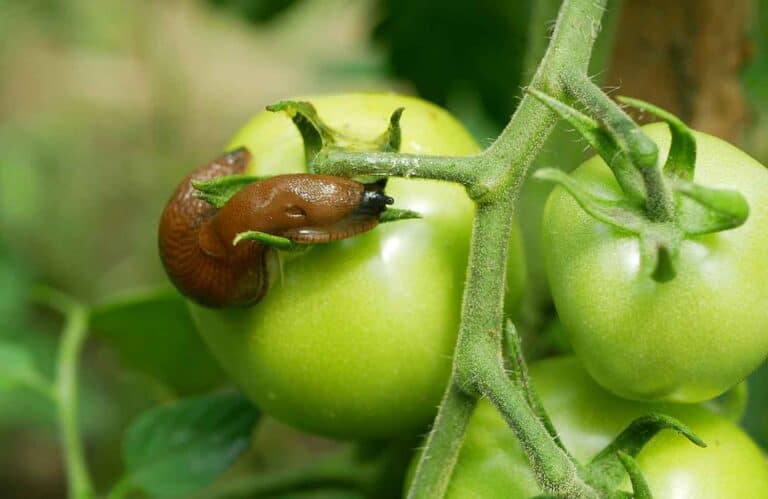What Do Slug Eggs Look Like & How To Get Rid of Them
Slugs are one of the worst garden pests for their ability to decimate plants, especially seedlings. If you have a slug invasion in your flower bed or vegetable garden, your immediate response is to protect your plants from the adult slugs doing the damage.
However, there could be a more effective way of prepping your garden so slug damage is minimal, that is to catch them before they are even born.
Finding slug eggs and removing them could avoid a major invasion of slugs – but finding and identifying them is tricky. In this article, I talk about how to hunt out these slimy pests’ favorite spots for laying eggs and how to safely remove them.
The Appearance of Slug Eggs: How To Identify Them
Slug eggs are small soft round balls that are often covered in a slimy substance that sticks them together. As they develop and the slugs hatch they can leave a thin crispy brown shell behind.
Look for the following characteristics when looking for new slug eggs:
- about 1/8 inch wide
- can be white, yellow, grey, brown, or look translucent in the early stages
- soft and squishy
- usually on the ground covered with soil or mulch
- …but can also be found on leaves or stems!
They are often mistaken for seeds, but you should be able to easily squash them between your fingers – if they are slug eggs.


Where Do Slugs Lay Eggs?
Slugs are most likely to lay their eggs in a cool, dark and moist environment. This is why you often find them congregating in shady areas of your garden or flowerbeds where there is plenty of mulch or leaf litter.
They also like areas where there is little disturbance – so if you have a newly planted flower bed, this could be a target area for slug eggs.
Can Slugs Lay Eggs On Leaves?
Yes, some species of slug will lay their eggs on the underside of leaves, which can make finding them even harder. If you suspect this is happening in your garden, pay close attention to any new leaves that have been chewed or damaged as these could be where slug eggs have been laid.
Below is an example of a bush completely decimated by slugs, which is covered in old slug eggs which have hatched and straight away had a perfect feast waiting for them. This is why some slugs lay their eggs on leaves – so their newborn has food immediately after hatching.



As you can see the Cape Figwort plant stood no chance against the army of baby slugs!
You might also find slug eggs around the base of plants or trees. Slugs like to lay their eggs in areas where there is already some vegetation as this provides them with protection and camouflage.
How Many Eggs Do Slugs Lay?
Slugs can lay anywhere from 30 to 100 eggs at a time, so it’s important to remove them as soon as possible! Some species will lay a large batch of eggs in soil or in a shaded and moist area, but some can lay smaller batches and spread them over a wider area or on separate leaves.
How Long Does It Take for a Slug Egg to Hatch?
This can depend on the temperature and conditions, but it’s estimated that slug eggs will hatch anywhere from 2 to 4 weeks after being laid. This is why it’s important to keep an eye on your garden regularly for any new growth or damage, as this could be a sign that slugs are hatching.
On average, slugs can lay over 500 eggs each season. It’s easy to see why your slug problem might get out of hand quickly!
In the proper setting, slugs’ eggs can remain dormant for an extended period of time. This makes it more difficult for gardeners because the eggs might hatch at any moment.
Can A Slug Fertilize Its Own Eggs?
Yes, slugs are hermaphrodites, which means they have both male and female reproductive organs. This allows them to fertilize their own eggs – meaning they don’t need another slug to reproduce!
Why Are Slug Eggs Harmful?
Dormant slug eggs are not dangerous. They will not cause any damage to your plants or garden. However, the presence of slug eggs means you will soon have an army of slugs feasting on your plants!
Slugs are classified as agricultural pests as they can cause significant damage to crops. They often feast on young plants or seedlings, which can stunt the growth of your plants or vegetables.
Slug eggs can on rare occasions be harmful to pets or animals that might mistake them for food. If ingested, the slimy substance that surrounds the egg can cause an upset stomach or diarrhea, so it’s always good to be aware of dogs or cats digging in soil that may contain eggs.

How Do You Get Rid of Slug Eggs?
The best way to get rid of slug eggs is to remove them by hand. This can be a time-consuming task, but it’s the most effective way to make sure all the eggs are destroyed.
If you have a small garden, you can keep an eye on areas where slugs might lay their eggs and remove them before they hatch.
For larger gardens, you can use a hoe or spade to turn over the top layer of soil every few weeks. This will expose any slug eggs that have been laid and allows you to remove them before they hatch.
I’d suggest searching for slug eggs in the early hours of the morning. This is when there is a lot of moisture in the air, making it easier to find the ideal locations for a slug to deposit its eggs. Consider where in the garden will be wet at this time of day and search there.
Now that you’ve discovered and located slug eggs in the garden, the next step is to get rid of them.
The simplest approach to destroy slug eggs is to smash them with the heel of your garden boot or a handy chunk of wood. If the eggs are in the soil, it’s best to remove them before trying to squish them, otherwise you may just push them deeper into the ground, where they can stay hidden and secure until they hatch.

What Eats Slug Eggs?
Slug eggs are a valuable food source for many creatures, including moles, birds, hedgehogs, toads, and some types of insects. If you have these helpful visitors in your garden, they may be able to help control the slug population by eating their eggs!
You can also encourage these natural predators by providing them with a habitat in your garden. For example, you can build a hedgehog house or leave an area of your garden unkempt to provide a safe place for toads and other creatures to live.
More Tips To Control Slug Eggs
There are a couple of other methods you could use to keep the slug population under control in your garden, including:
Sprinkle Diatomaceous Earth
Sprinkle diatomaceous earth around your worst-affected flower beds or vegetable patches. With their soft, slimy body, slugs can’t cross this earth because it’s too rough for them.

Turn Your Soil Regularly
As we’ve already mentioned, slugs love to lay their eggs in damp soil. To make your garden less appealing to them, turn over the top layer of soil every few weeks. This will expose any slug eggs that have been laid and allows you to remove them before they hatch.
Dry Out The Soil
If your soil is infested with slug eggs, stop watering the area of the garden which is most affected. Wait until the soil is completely dry in the fall.
Any eggs in the soil will be destroyed because slug eggs must stay wet to survive, so they’ll all perish.
Conclusion
Now you know what slug eggs look like, where to find them, and how to get rid of them. With a little patience and perseverance, you can keep the slug population in your garden under control!
Happy gardening!






